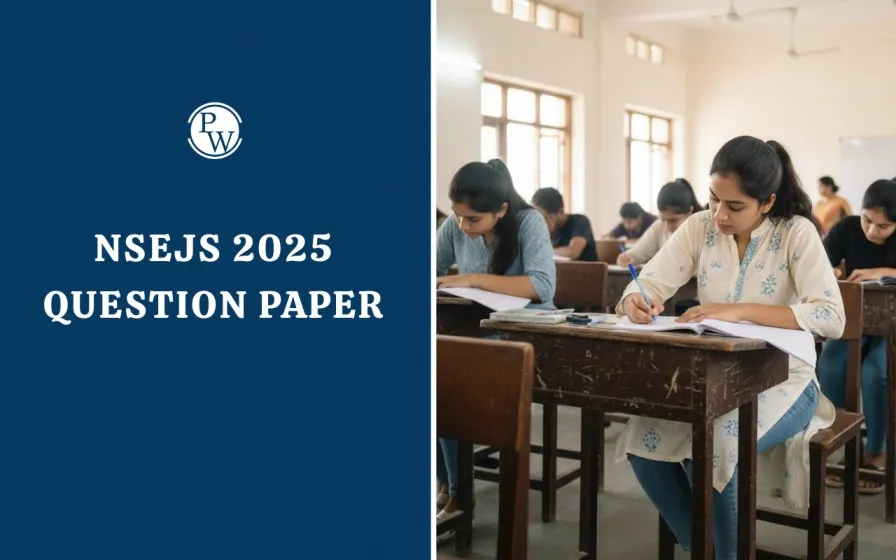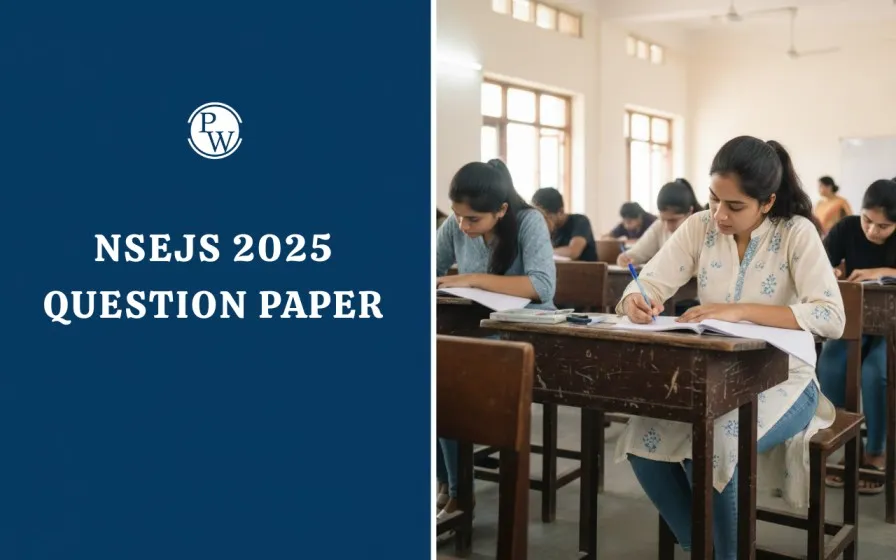

NSEJS 2025 Question Paper is one of the most sought-after resources for students preparing for the National Standard Examination in Junior Science. Aspirants look for insights into the paper structure, chapter-wise distribution, difficulty trend, and previous-year practice papers to boost their chances of clearing the junior science Olympiad stages conducted by IAPT.
NSEJS 2025 Question Paper Overview
This structure mirrors the precision and analytical depth seen in NSEA 2025 Question Paper formats, making cross-referencing useful for preparation.
Here’s a quick look:
| Particulars | Details |
| Exam Name | National Standard Examination in Junior Science (NSEJS) 2025 |
| Conducting Body | Indian Association of Physics Teachers (IAPT) |
| Question Type | Objective (MCQs) |
| Total Questions | 60 |
| Total Marks | 216 |
| Duration | 2 Hours |
| Medium | English, Hindi, Gujarati |
| Difficulty Level | Moderate–High |
| Next Stage | INJSO |
NSEJS 2025 Question Paper PDF Download Link
Like the NSEA 2025 Question Paper, the official NSEJS paper becomes available after the exam
NSEJS Question Paper 2025 PDF Links:
NSEJS 2025 Question Paper: Pattern & Question Distribution
1. Types of Questions
-
Conceptual MCQs
-
Multi-step numerical MCQs
-
Application-based science problems
-
Data interpretation & graphs
2. Subject-Wise Prediction
-
Physics: Mechanics, electricity, heat, motion, optics
-
Chemistry: Basic reactions, atomic structure, acids-bases, physical chemistry
-
Mathematics: Algebra, number theory, geometry, basic calculus intuitio
-
Biology: Life processes, cell biology, physiology, genetics basics
Why Solving the NSEJS 2025 Question Paper Is Important
Using reference insights from NSEA-style papers, solving the NSEJS 2025 papers provides:
1. Clear Understanding of Exam Pattern
Get familiar with the weightage of Physics, Chemistry, Maths, and Biology questions.
2. Time Management Skills
60 high-level MCQs in 120 minutes means students must manage time strategically.
3. Better Concept Application
NSEJS questions test conceptual depth and analytical multi-step reasoning.
4. Identification of Weak Chapters
Students often find mechanics, optics, number theory, and chemical energetics challenging.
5. Reduced Exam-Day Stress
Practising full-length papers boosts confidence and accuracy.
Difficulty Level for the NSEJS 2025 Question Paper
Based on IAPT’s style and previous reports:
-
Physics: Moderate–High (calculation-based)
-
Chemistry: Moderate (concept-heavy)
-
Maths: High (logical & analytical)
-
Biology: Moderate (fact + application mix)
Overall Expected Level: Moderate–High
This difficulty trend parallels what students observe in other olympiad-stage papers such as NSEA 2025.
Topics Likely to Be Covered in NSEJS 2025
Physics
-
Motion, forces, energy
-
Heat & thermodynamics
-
Light & optics
-
Electricity & circuits
Chemistry
-
Periodic table
-
Chemical reactions
-
Basic physical chemistry
-
Solutions & mixtures
Mathematics
-
Algebra
-
Geometry
-
Logical reasoning
-
Number theory
Biology
-
Cells, tissues
-
Human physiology
-
Plant physiology
-
Basics of genetics
